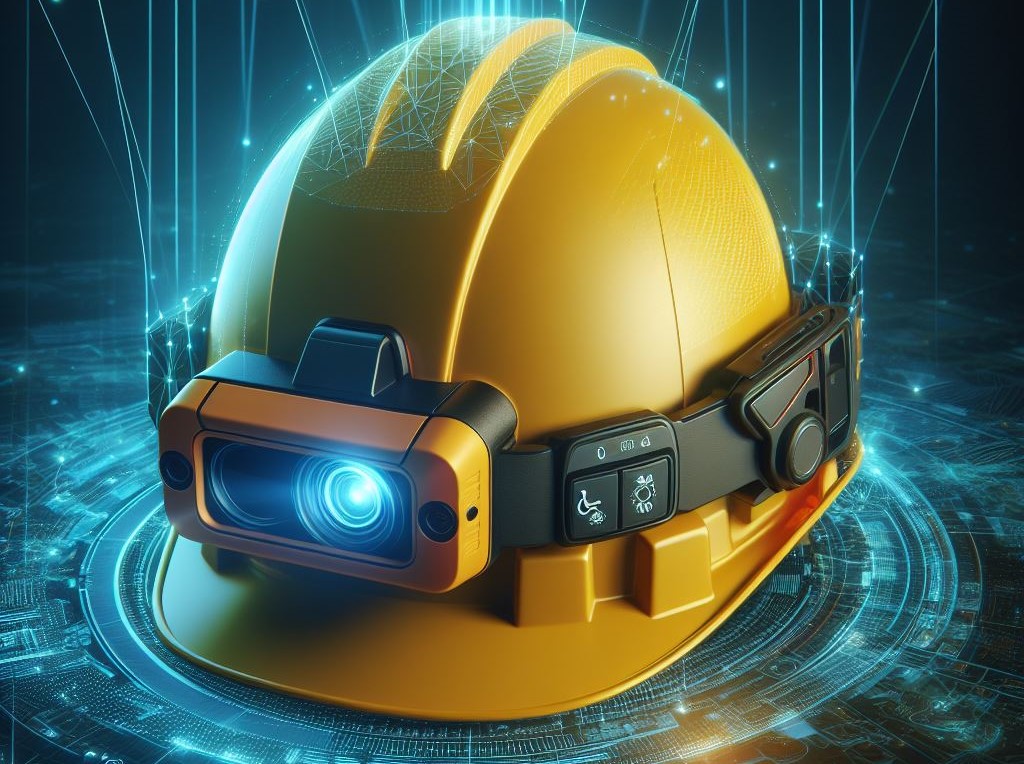Smart hard hats – taking health and safety another vital step forward
The traditional hard hat, a symbol of construction safety for decades, is getting a high-tech upgrade with a new wave of head protection that integrates sensors, communication technologies and even data collection capabilities. These advancements have the potential to revolutionise safety protocols on construction sites, offering a proactive approach to hazard detection and risk management writes John Ridgeway.
The concept of smart hard hats is relatively new, with the first prototypes emerging around the late 2000s and early 2010s. However, the technology is rapidly evolving, and pilot programmes and early deployments are offering valuable insights into their real-world applications.
Construction organisations in Scandinavian countries, known for their particular focus on safety and innovation, have been at the forefront of implementing smart hard hat technology, with companies such as Skanska and NCC, who have reportedly piloted smart hard hats with features like fall detection and worker location tracking.
Companies like Guardhat Technologies and SmartCap Technologies are also developing and testing smart hard hats in the US. These hard hats offer features like impact detection, data collection on worker movement, and environmental monitoring capabilities.
It's important to note that widespread adoption of smart hard hats is still in its early stages. The high cost compared to traditional hard hats and concerns about data privacy are some of the hurdles that still need to be addressed, but there is no doubt, that they are needed.
The alarming statistics
Head injuries are a leading cause of serious injuries and fatalities in the construction industry worldwide. According to the Health & Safety Executive (HSE) in the UK, an estimated 59 construction workers suffered head injuries during a recent three-year period, with 186 of them resulting in a loss of consciousness and 79 causing concussions. (
The Bureau of Labor Statistics (BLS) in the United States reports that over 65,000 construction workers experienced head injuries in 2012, many of them requiring time away from work to recover. Data from the Health & Safety Executive (HSE) in Singapore also reveals that head injuries are the second most common type of injury in the construction sector, highlighting the global nature of this issue.
How do they work?
The core functionality of a smart hard hat lies in its ability to detect potential hazards. Several sensors work in tandem to create a virtual safety net around the worker. These may include accelerometers and gyroscopes which detect sudden changes in motion or impact, potentially indicating a falling object. The severity of the impact can also be measured.

Similarly, LiDAR (Light Detection and Ranging) can also be implemented. An advanced sensor uses lasers to create a 3D map of the surrounding environment. This allows the smart hard hat to detect potential hazards like falling debris even before it comes into contact with the worker.
Once a hazard is detected, the smart hard hat can react in several ways. It may emit an audible or visual alert, notifying the worker of impending danger. This crucial warning allows the worker precious time to take evasive action and potentially avoid injury.
Some smart hard hats can also collect data on the severity of an impact and transmit it wirelessly to a central hub. This data can be invaluable for safety managers, helping them identify areas with a higher risk of falling objects and implement targeted interventions.
The benefits
The potential benefits of smart hard hats are numerous. Real-time hazard detection with alerts can significantly improve worker safety by providing a crucial warning before an accident occurs. The constant feedback from smart hard hats can also keep workers more alert and aware of their surroundings, promoting safer work practices.
In time it is expected that smart hard hats can be equipped with features to monitor the well-being of workers in remote areas, potentially sending alerts in case of falls or other emergencies. Some smart hard hats can also be integrated with RFID technology to track the location and movement of tools and equipment, reducing the risk of lost or misplaced items.
Furthermore, sensors can be used to monitor air quality, noise levels, and other environmental factors on construction sites, ensuring a safer and healthier work environment.
Like most new innovations in construction smart hard hats hold immense promise, but there are also some challenges. The initial cost of smart hard hats may be higher than traditional hard hats, which could pose a barrier to widespread adoption across the industry.
The effectiveness of smart hard hats also depends on reliable battery life. Ensuring long-lasting power sources and efficient charging solutions will be crucial. The data collected by smart hard hats further raises concerns about worker privacy. Clear guidelines and data security measures need to be established.
The evolution of the hard hat
The evolution of the smart hard hat is a natural development. The use of head protection in construction dates back centuries. Early versions included simple leather or wickerwork caps, offering minimal protection against falling objects. The need for more robust headgear became increasingly apparent with the rise of high-rise buildings and complex construction projects in the 19th century.
The modern hard hat as we know it emerged in the early 20th century. Initially made of steel or aluminium, these early versions were heavy and uncomfortable. However, advancements in materials science led to the development of lighter and more durable materials like fiberglass and thermoplastics.
Modern hard hats are a marvel of engineering, providing superior protection compared to their predecessors, with improved impact absorption. Modern hard hats utilise a suspension system that cradles the wearer's head, absorbing the impact of a falling object and distributing the force over a larger area.
Lightweight materials and ventilation systems have also made hard hats more comfortable to wear for extended periods, improving worker compliance and reducing fatigue. Reflective strips and high-visibility colours have also enhanced a worker's visibility on construction sites, especially during low-light conditions.
Some hard hats offer additional protection features, such as electrical insulation or integrated face shields, catering to specific hazards present at certain work areas.
A safer future
Without doubt, smart hard hats are a significant leap forward in construction safety. By providing real-time hazard detection, data collection capabilities, and potential integration with other technologies, smart hard hats have the potential to revolutionise how we approach safety on construction sites.
However, overcoming challenges like cost, battery life and data privacy concerns is key to ensuring their widespread adoption. By working together, stakeholders in the construction industry can leverage the power of smart hard hats to create a safer and healthier work environment for all.
Sources:
https://www.wencomine.com/our-solutions/safety
https://www.headway.org.uk/news-and-campaigns/campaigns/hard-hat-awareness-week/
(It should be noted, that the images generated to go with this feature have been Ai generated and are only a representation of what might be possible.)
Additional Blogs

The silent death of the fixed-price contract
For decades, the fixed-price contract has been the backbone of construction procurement. It promised certainty with a defined scope, an agreed sum and a clear transfer of risk from client to...
Read moreWhy good contractors are walking away from bad projects
There is a growing change happening across the construction industry, one that many clients still have not fully recognised. Highly competent, reputable contractors are increasingly walking away from...
Read more

When fire breaks out who really knows the system
The story that caught my attention recently wasn’t about fire growth or building loss, it was about confusion. Specifically, the confusion faced by the fire service when arriving at buildings...
Read more